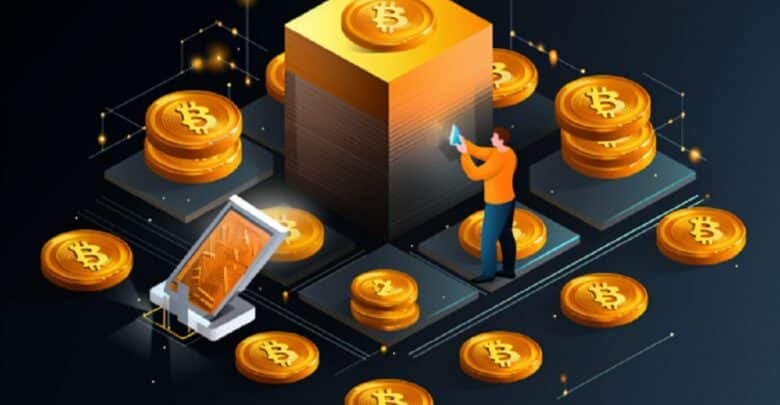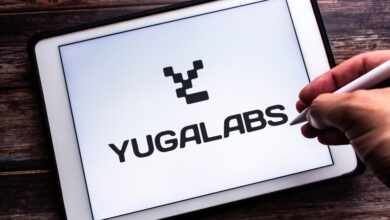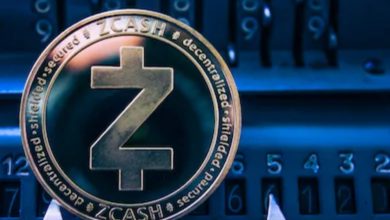What Is Bitcoin’s Fee-To-Reward Ratio And Why Is It Important?

The Bitcoin network is sustained by a proof-of-work (PoW) consensus mechanism. This is an algorithm that rewards miners – people who mine Bitcoin – for solving mathematical puzzles to validate transactions on the network.
Block rewards are a certain amount of Bitcoins miners receive for successfully mining a new block. Another source of income for miners is transaction fees. These are fees you pay for carrying out transactions over the Bitcoin network.
The fees can go up significantly when the network is congested, and this adds up quickly in favor of miners. The ratio of these fees to the total block reward miners get from mining within a given time is the fee-to-reward ratio.
In this guide, we explain what this is, and why it is important in securing the Bitcoin network. However to understand it, we must understand some terminologies associated with the PoW consensus, namely block reward, block subsidy and transaction fees.
What Is Block Reward?
Block reward refers to bitcoin reward that miners get for successfully mining a transaction block and adding it to the blockchain. Block rewards can change depending on a number of variables such as how fees are charged. A block reward comprises block subsidy and transaction fees.
Block subsidy is the fixed amount of new bitcoins released to miners for mining a transaction block. This is how new bitcoin comes into circulation. The block subsidy is cut in half roughly every four years.
The block subsidy serves as an incentive to encourage miners since they commit a lot of resources towards mining, especially now that the mining difficulty has reached astronomical heights.
Transactions fees on the other hand are the fees charged for carrying out transactions on the Bitcoin network. Miners prioritize transactions with higher fees over those with lower fees, and the fees have been on the increase recently as demand for Bitcoin continues to rise.
Block reward and block subsidy were used interchangeably when the transaction fees were low, but they are becoming a significant part of block reward now. Therefore, to determine block reward, you’ll add up transaction fees and block subsidy.
Fee-To-Reward Ratio
Now that we know what fees are and what block rewards are, let’s consider what fee-to-reward ratio is. It is the proportion of transaction fees to the total block reward, i.e Transaction fees / Transaction fees + Block Subsidy. You can express it as a fraction, or as a percentage by multiplying the result by 100.
Why is Fee-To-Reward Ratio Important?
Bitcoin’s fee-to-reward ratio is an important metric when it comes to securing the Bitcoin network. As stated earlier, Bitcoin’s block subsidy is reduced by half about every four years. It is estimated that by 2140, it will hit zero, which means the only incentive for miners to secure the network will be transaction fees.
The fee-to-reward ratio Tells us if the transaction fees will be able to sustain miners when block subsidy is finally taken away. This is crucial to Bitcoin’s security as without miners and the proper incentive to keep them working, the entire network can collapse.
For transaction fees to be able to sustain miners without block subsidy, there has to be a gradual increase over time. This is attainable as the rate of Bitcoin adoption increases as was the trend between 2017 and 2020 when fees spiked as a result of institutional interest.
In the coming years, the adoption for Bitcoin is expected to increase, with an attendant increase in transaction fees, making it possible for miners to live on fees eventually, should Bitcoin continue to appeal to the world.
However, a critical balance must be maintained between rising fees and affordability for users. If the fees should rise to a level where users cannot afford to use the network, the aim of Bitcoin will be defeated. At the same time, the fees must be sufficient to keep mining profitable.
Tokenhell produces content exposure for over 5,000 crypto companies and you can be one of them too! Contact at info@tokenhell.com if you have any questions. Cryptocurrencies are highly volatile, conduct your own research before making any investment decisions. Some of the posts on this website are guest posts or paid posts that are not written by Tokenhell authors (namely Crypto Cable , Sponsored Articles and Press Release content) and the views expressed in these types of posts do not reflect the views of this website. Tokenhell is not responsible for the content, accuracy, quality, advertising, products or any other content or banners (ad space) posted on the site. Read full terms and conditions / disclaimer.







